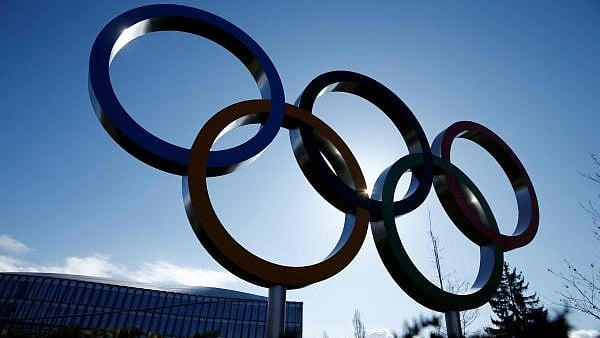
Olympic logo
Credit: Reuters File Photo
On October 1, 2024, India made its Olympic aspirations official, with the Indian Olympic Association (IOA) formally submitting the letter of intent to the International Olympic Committee (IOC) to host the 2036 Olympics, a significant milestone in India’s sports journey.
Historically, we have seen how the Olympics have been an economic liability for the host nation; the classic case in recent Olympic chronicles is the 1976 Montreal Games. An initial projected cost of $120 million spiralled into a 1,200% overrun due to construction delays and corruption. The debt burden lingered for three decades, paid off eventually by generations of taxpayers’ money. Similarly, Athens 2004, positioned as a nostalgic homecoming to Greece, the birthplace of the modern Olympics, was anything but a fairytale. Held just before the Greek financial crisis, the event exacerbated economic woes instead of offering a turnaround. But then again, the Olympics were never meant to be a profit-making venture.
India must learn from these examples. Hosting the Olympics can indeed act as a catalyst, but only if it is rooted in strong grassroots development, inclusive planning, and sustainable policies. Legacy isn’t automatic; it must be deliberately built.
The IOC provides guidance to nations bidding for the Olympics, ensuring the ‘games adapt to the city/region’ and not vice versa, which means the games can be hosted across cities/regions and even countries. Sustainability is a salient feature, where maximum usage of existing infrastructure and temporary facilities is encouraged. We saw these principles in action at the Paris 2024 Olympics. This new agenda is an attempt to discourage vanity or image-based proposals where pomp and show precede practical and community-focused planning. Finally, the strategic benefits of the Olympic movement and the bidding process are to help improve diplomatic relationships and the region’s international profile.
This new framework thus makes India’s 2036 bid more viable. If planned and executed wisely, we can gain exponentially from the positive externalities these games have already started churning. In a recent high-level coordination committee meeting in Gandhinagar, the building blocks for this mega-project were laid. Ahmedabad 2036 outlined the budget at $7.47 billion – 30% of the existing Olympic sports facilities will be repurposed, 60% will be newly developed and 10% will be temporary. Under the Agenda 2020 guidelines, India’s bid envisions co-hosting across multiple cities – Goa, Bhopal, Pune, and Mumbai.
The Union Ministry of Youth Affairs and Sports (MYAS) is also actively involved. As part of the 2036 Olympic mission, the Ministry has initiated the CSR round-tables, bringing together large corporations, public sector enterprises, gaming companies, and grassroots sports nonprofits to shape the roadmap for Olympics 2036.
These multi-stakeholder forums are pivotal in driving investment into sports infrastructure, talent development across key age groups, scientific training methods, and the creation of dedicated Olympic Training Centres. Notably, the second edition of these round-tables included representation from the Board of Control for Cricket in India (BCCI), which signalled its intent to support and develop select Olympic disciplines, a significant shift in the Indian non-cricket sports landscape.
New collaborations
A key emerging theme is the “tripartite model” of sports development in India, with MYAS, National Sports Federations (NSFs), and corporate players each contributing based on their core strengths. The government provides policy support, infrastructure, regulatory approvals, and a talent pipeline through initiatives like Khelo India and rural games. Financial incentives, including GST benefits, are designed to attract private sector participation.
Corporates, leveraging their capabilities in branding, infrastructure, and management, are being encouraged to establish at least one Olympic Training Centre that is aligned with a priority sport and the interested state. Meanwhile, NSFs are tasked with building a high-performance ecosystem focusing on technical excellence and holistic development of coaching staff
and athletes. To ensure sustainable regional cooperation, it is recommended that local community representatives be actively involved in the decision-making process, ensuring that civic society’s voices are heard and integrated.
India has a proven record in organising international festivals, single-event sports tournaments, and diplomatic summits. But the Olympics require more than just a celebration. It demands multi-sector collaboration: private through CSR, Public-Private Partnerships (PPP) and other initiatives; civic society; forward-looking governance and policies; and mindful government commitment.
If approached prudently, India’s Olympic bid can
not just be for 2036, but for 2047 and beyond – to announce to the world that we are a global sporting force to be reckoned with.
(Gaurav is a sports policy consultant; Malathi is the head of policy school,
Takshashila Institution)